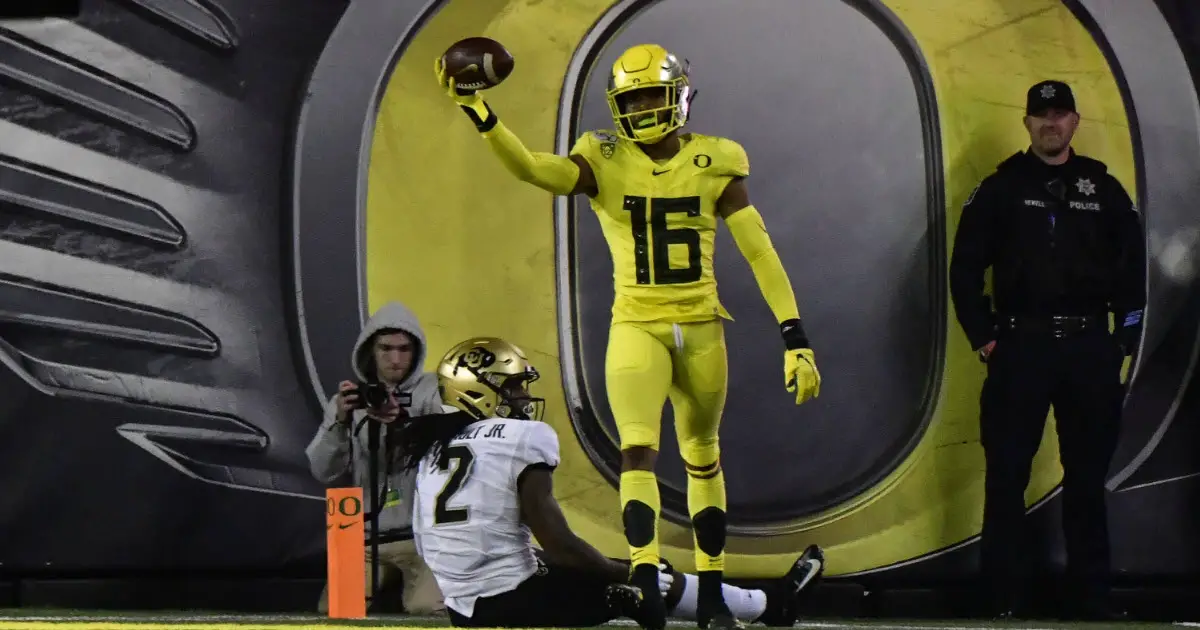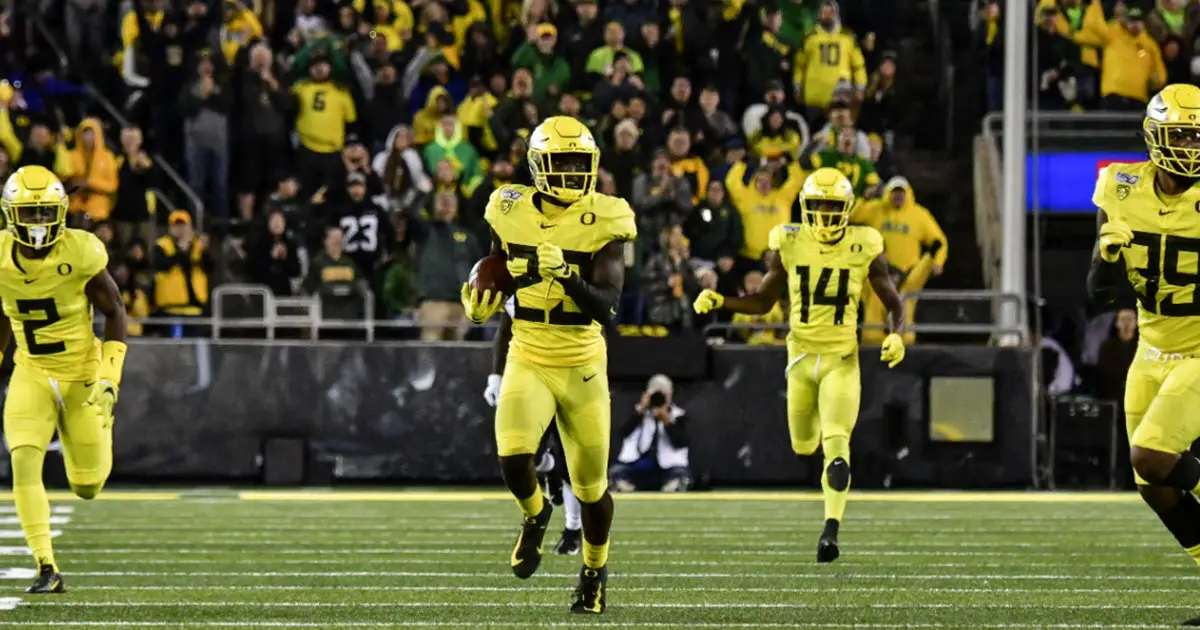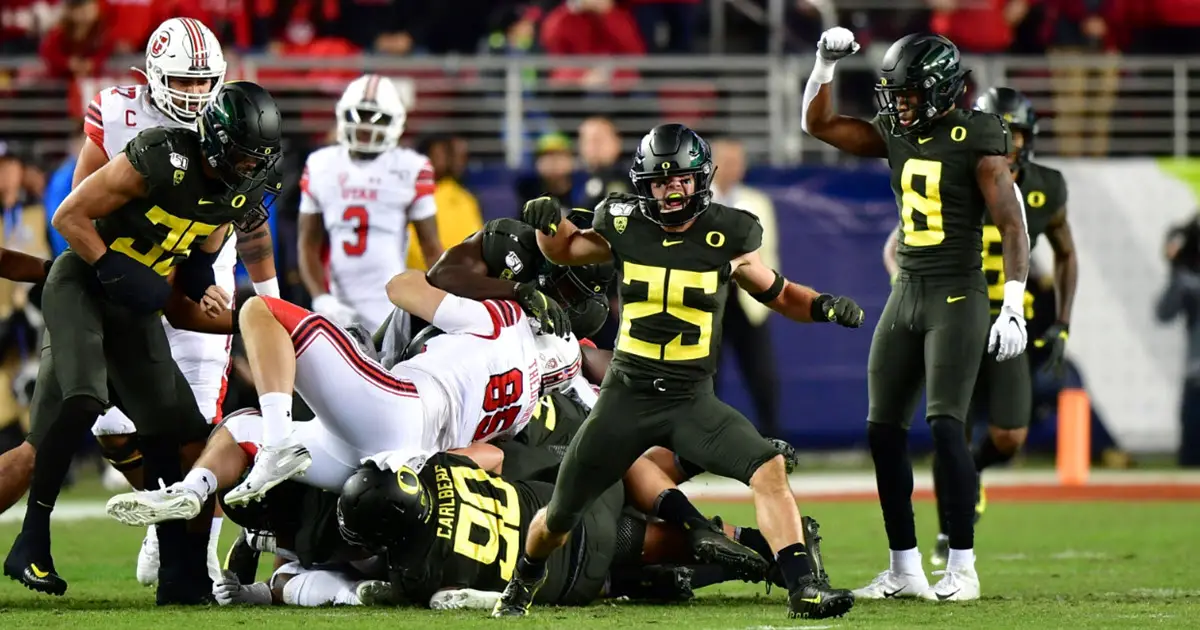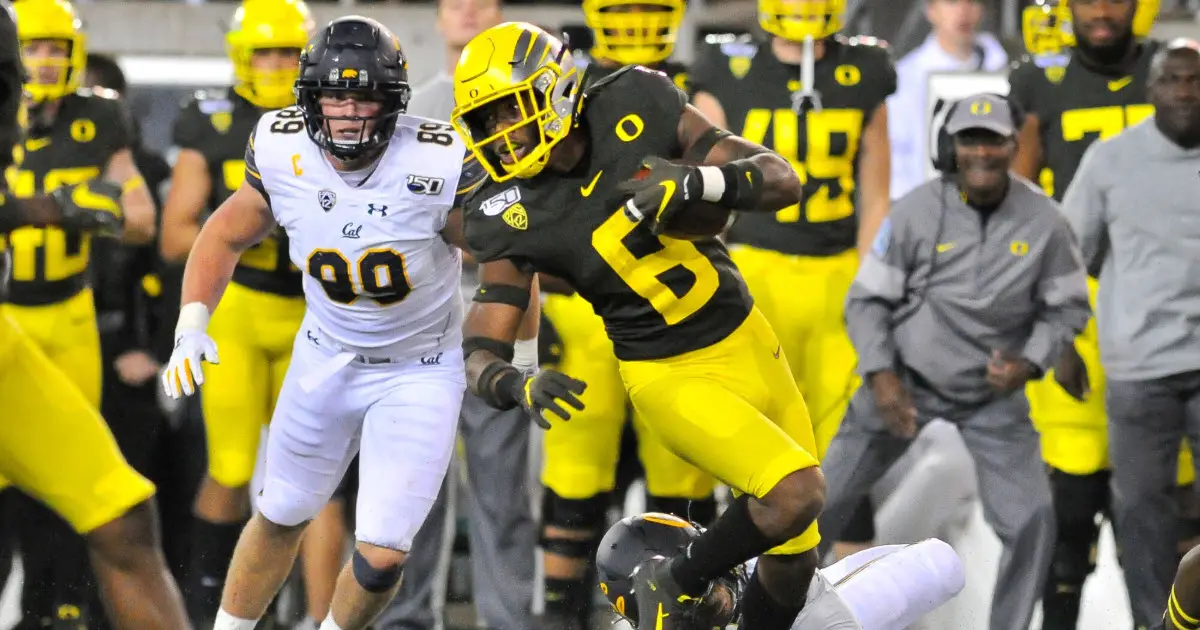At least one of the luminaries in the college football brain trust opines that Oregon has the best incoming secondary for next season. This May 1st article by Anthony Treash of PFF contends that Oregon’s secondary is not only the best, but it’s not even close. His argument rests primarily upon a metric that compares how well an individual returning player stacks up against an average college player at that same position — Wins Above Average or WAA.
Using that metric, he claims that Oregon has four of the top 25 cornerbacks in Deommodore Lenoir, Thomas Graham Jr., Mykael Wright and Jevon Holland. (Perhaps he didn’t get the memo that Holland has pretty much played his whole career at safety).
Then, at the safety position, Mr. Treash happily relates that Oregon returns two of the top 11 in Nick Pickett and Brady Breeze. Monsieur Treash summarizes:
“The Ducks’ secondary returns more snaps than any other in college football and — most importantly — returns the most talent than [sic] anyone else by a mile”.

Thomas Graham celebrates a pick-six in the Civil War.
Highest WAA in returning secondaries in 2020
| Team | WAA |
| 1. Oregon Ducks | 1.88 |
| 2. Georgia Bulldogs | 1.28 |
| 3. LSU Tigers | 1.19 |
| 4. TCU Horned Frogs | 1.03 |
| 4. Virginia Tech Hokies | 1.03 |
| 6. Washington Huskies | 1.02 |
Indeed, he leaves us with the blood-stirring conclusion that Oregon’s returning secondary has the highest WAA that the folks at PFF have ever seen in the PFF college era!
So, just before my darling bride and I were going to drive the three hours north to Vegas to make a substantial early-bird bet on the Ducks winning the next “Natty” (currently the odds are +1800), I decided that I would idle away some time on Google while my bride packed our bags.
I reasoned that our veteran corners of Lenoir, Graham and Wright must all rate pretty highly on those “way too early” mock NFL draft boards for cornerbacks. I left off Holland because, well … you know. Of the six mock boards that I checked, the first had no Ducks at all in the top 16 corners that they listed. The second had Lenoir and Graham at corners No. 14 and No. 21, respectively. The third had no Ducks in the top 11. The fourth had only Lenoir at No. 9. The fifth had Lenoir at No. 15 and Graham at No. 21. The last had no Ducks in the top 10. Somewhat crestfallen, I ended my search.

Deommodore Lenoir makes an incredible one-handed interception at USC.
Hmmm. Well, I thought, maybe it’s one of those times where the whole is greater than the sum of its parts. Maybe the secondary taken as a group performs exceptionally well. If that is the case, then last year’s defensive passing stats should give some indication of that. One would expect that, game by game, Oregon would have kept overall passing yards per game well below the average yards per game for each of the quarterbacks that we faced.
Last year, the Pac-12 boasted four quarterbacks (out of a total of thirteen in all of FBS) who completed more than two-thirds of their passes. In order of completion percentage, they were: No. 2 Tyler Huntley (73.1%), No. 3 Kedon Slovis (71.9%), No. 4 Anthony Gordon (71.6%) and No. 13 Justin Herbert (66.8%).
Not surprisingly, these four also ranked in the top five quarterbacks in the Pac-12 in terms of passing yards. In order: Gordon (5593), Slovis (3502), Herbert (3471), Jacob Eason (3132) and Huntley (3092).
The upshot is that, out of the bunch, only Herbert was drafted. Huntley and Gordon were also both seniors, but they failed to be drafted. The Pac-12 had some very good quarterbacks last year, but only Herbert was truly elite.

Nick Pickett’s pick stopped a Colorado TD.
How did we do against these three very good, but not elite, Pac-12 QBs?
Gordon (WSU) averaged 429 ypg last year. We held him to 406, (32/50).
Slovis (USC) averaged 291 ypg last year, and he hung only 264 on us (32/51).
Huntley (Utah) averaged 220 ypg, and he threw for 193 against us (17/29).
Clearly, we slowed them down … a bit. We held them each to about 25 ypg below their average. Good, but then again, these three aren’t elite quarterbacks. I am thinking that we should have done a bit better.
How did we do against the next tier of Pac-12 quarterbacks?
Eason (Wash), who averaged 240 ypg, dropped 289 on us (23/30), 49 yards more than his average.
Jayden Daniels (ASU), who was No. 6 in the Pac-12 with an average of 245 ypg, torched us for 408 (22/32), 163 yards above his average.
Both threw better than their averages, and in Daniels’ case, much better. Against less-than-top-tier Pac-12 quarterbacks, we played even worse than we did against the top tier. Not something elite secondaries do.

Verone McKinley returns one of his two picks vs Colorado.
How about the remaining four Pac-12 QBs?
Well, in no particular order:
Khalil Tate (Arizona) (average of 177 ypg) and Grant Gunnell (Arizona) (average of 142 ypg), combined for 132 yards while going 17/30. We held them to about 30 yards below their combined average.
K.J. Costello (Stan.) (average of 208 ypg) was held to only 120 yards while going 16/30, 88 yards below his norm.
Steven Montez (Colo.) (average of 234 ypg) could only manage 131 yards while going 19/34, 103 yards below his average.
Jake Luton (OSU) (average of 246 ypg) did not play in the Civil War. His replacement was Tristan Gebbia (OSU), who threw for 243 yards against us.
Against the four Pac-12 quarterbacks who were the lowest ranked of the nine we faced, we were able to decently reduce the production of three. We don’t know whether we held Gebbia below his average or not since he didn’t have any full games against anyone except Oregon. But the fact that, in his first game as a starter, he threw for what Luton averaged doesn’t inspire awe.

Brady Breeze makes a big 4th down stop in Pac-12 Championship.
The Bottom Line
While my wife was unpacking our bags from our now-canceled Vegas romp, I meditated deeply on the implications of my, admittedly limited, research. The conclusion was, in Robert Palmer‘s words, simply irresistible.
It would appear that the gushing appraisal of the good Sir Treash might be just a tad over-stated. We certainly have the athletes to become one of the best secondaries in the nation. Conceivably, if the stars align, a top three. They are good — very good. But in light of how we actually performed last year, to make the unvarnished, hyperbolic declaration that we return, hands down, the best secondary in modern football history … well, my darling bride and I would love to repack those bags, but …
Lou Farnsworth
Fontana, CA
Top Photo: Kevin Cline
 Andrew Mueller, the FishDuck.com Volunteer Editor for this article, works in digital marketing in Chicago, Illinois.
Andrew Mueller, the FishDuck.com Volunteer Editor for this article, works in digital marketing in Chicago, Illinois.
Related Articles:
Oregon Enters Playoffs Better Off Than Last Year
Will The Coaching Carousel Kill Oregon's CFP Chances?
The Playoff Formula Hasn't Changed
Oregon Aims to Bury Dawgs, Punch Playoff Ticket in Rivalry Clash
Huskies Are the New Beavers, Stay In Your Lane Kiffin, and the Civil Apple Cup War
Oregon Football: The X-Factor Vs. Washington
Lou was raised in Eugene. He moved there in 1959, at the age of nine, when his father joined the faculty at the U of O. The first Duck football game that he can remember occurred at Hayward field: a 1963 loss to San Jose State. After serving in the Army from 1968-70, he returned to Eugene, worked in the woods for a few years; and then eventually earned a degree in Mathematics Education from the U of O in 1976. For the past 43 years he has taught secondary mathematics, mostly in southern California. He lives there with Shawn, his wife of 37 years, who is also an Oregon alum. Together they have two sons and a daughter. He retired in June of 2019. When Shawn retires in June of 2021 they will be moving to Pueblo, Colorado.

